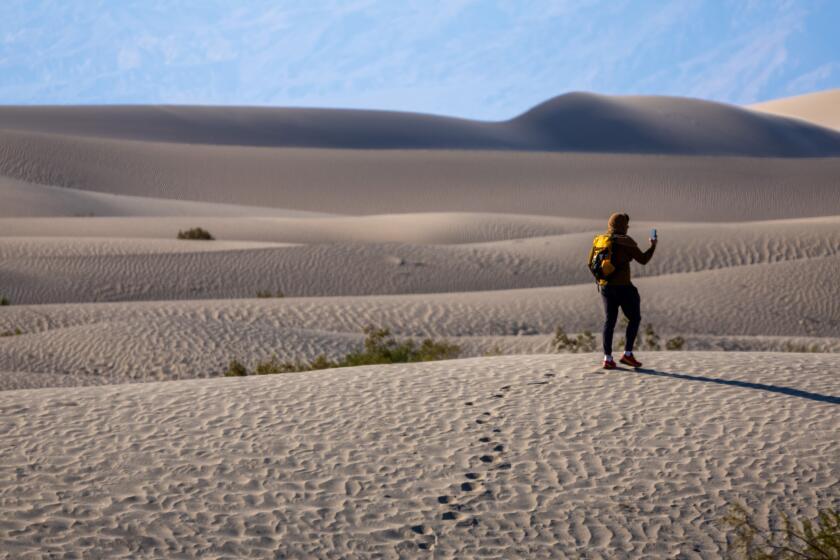According to a National Park Service news release, the 42-year-old Belgian tourist was taking a short walk Saturday in the Mesquite Flat Sand Dunes in 123-degree heat when he either broke or lost his flip-flops, putting his feet into direct contact with the desert ground. The result: third-degree burns.
“The skin was melted off his foot,” said Death Valley National Park Service Ranger Gia Ponce. “The ground can be much hotter — 170, 180 [degrees]. Sometimes up into the 200 range.”
Unable to get out on his own and in extreme pain, the man and his family recruited other park visitors to help; together, the group carried him to the sand dunes parking lot, where park rangers assessed his injuries.
Though they wanted a helicopter to fly him out, helicopters can’t generate enough lift to fly in the heat-thinned air over the hottest parts of Death Valley, officials said. So park rangers summoned an ambulance that took him to higher ground, where it was a cooler 109 degrees and he could then be flown out.



We’ve become spoiled by how much we’ve bent nature to accommodate us. We’re more fragile than we think.
I went on “a hike” with “a friend” (big quotation marks here because they’re no longer a friend obviously) that quickly turned into an unanchored free climb with no way back down with one another friend who was baked.
Our chance of significant injury or death was 90% at 2200 feet up, and we managed to get out of the climb and back down without so much as a twisted ankle. A literal fucking miracle.
When we went for food later, all I could talk about was how close we were to death, and how I’m never doing that again, but they seemed completely unfazed.
My best assumption? Brain worms.
Toxoplasmosis Gondii destroys the fear impulse in humans and causes them to engage in increasingly risky behavior, until it eventually kills them. It’s how the parasite procreates in mice (leading them to predators and wild cats).
Some people are just very bad at risk assessment. I’m glad you survived!
Others are bad at risk assessment by over estimating risk. They are boring buzzkills.
Much better to overestimate risk than underestimate it when the risk is death!
But how worth living is a life overly guarded?
There’s a big range between “never takes any risks” and “takes stupid pointless risks.”
Is “not wearing flip flops in death valley” or "not climbing 200ft up a tree really OVERLY guarded, though? 🤔